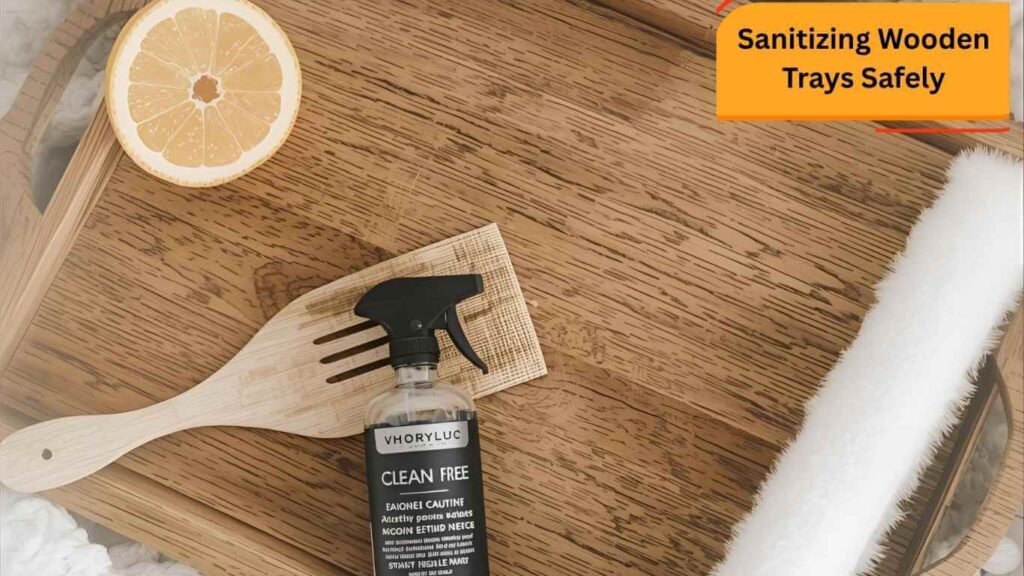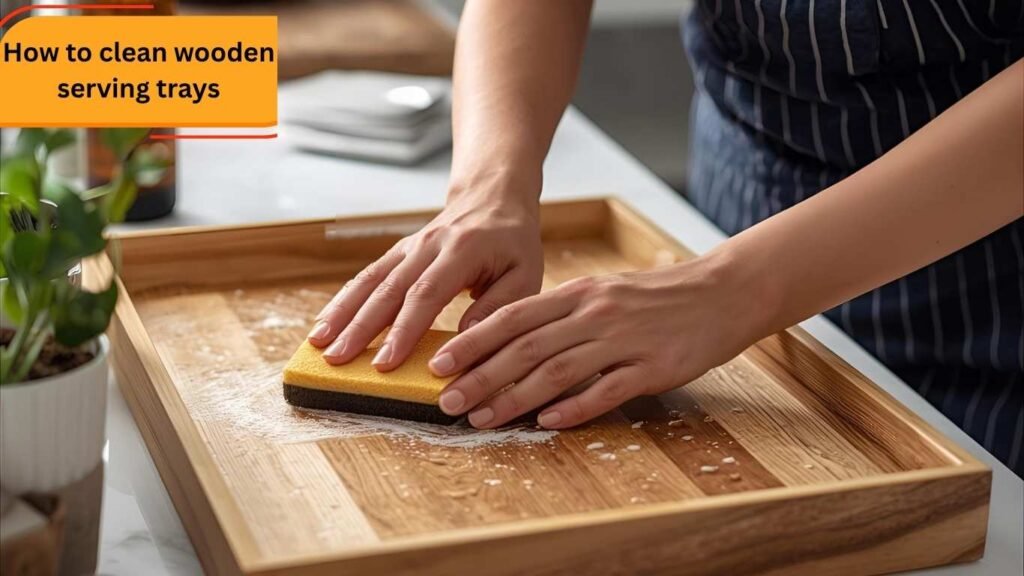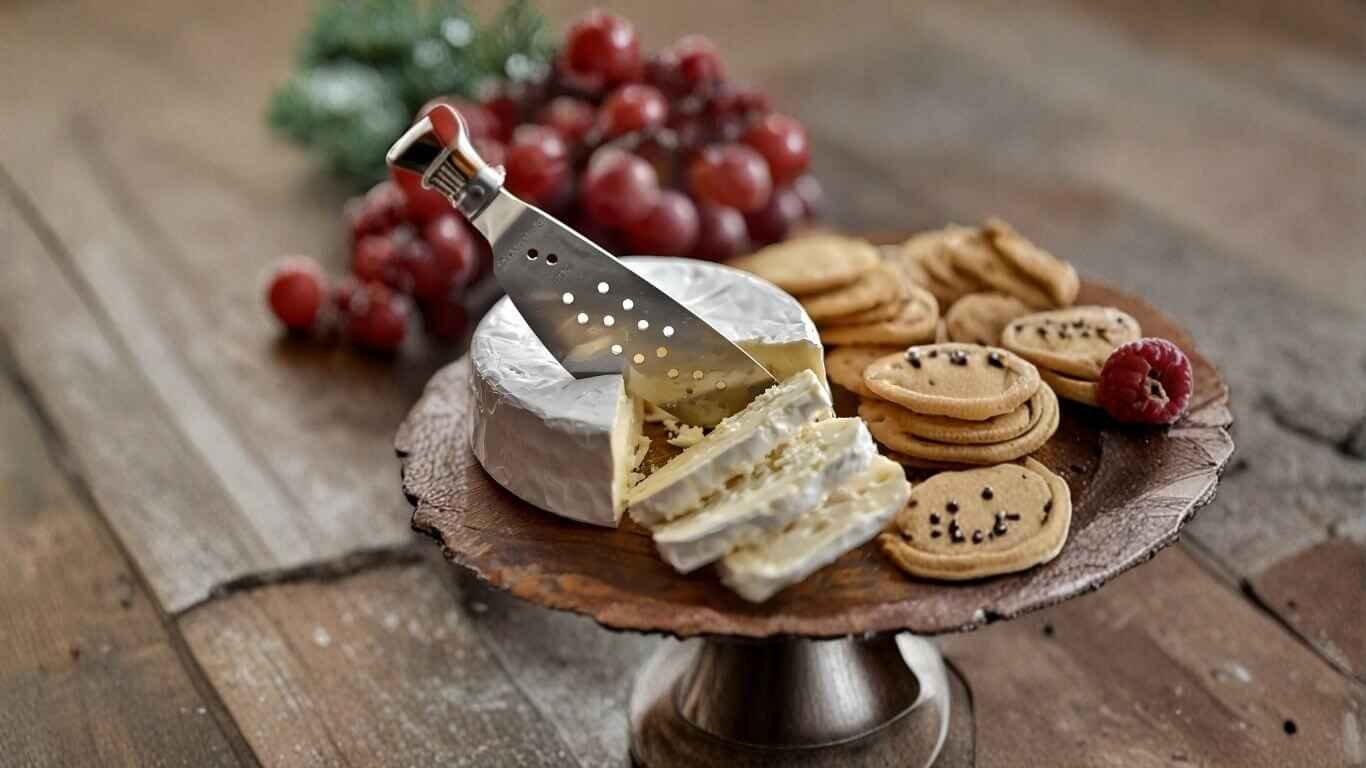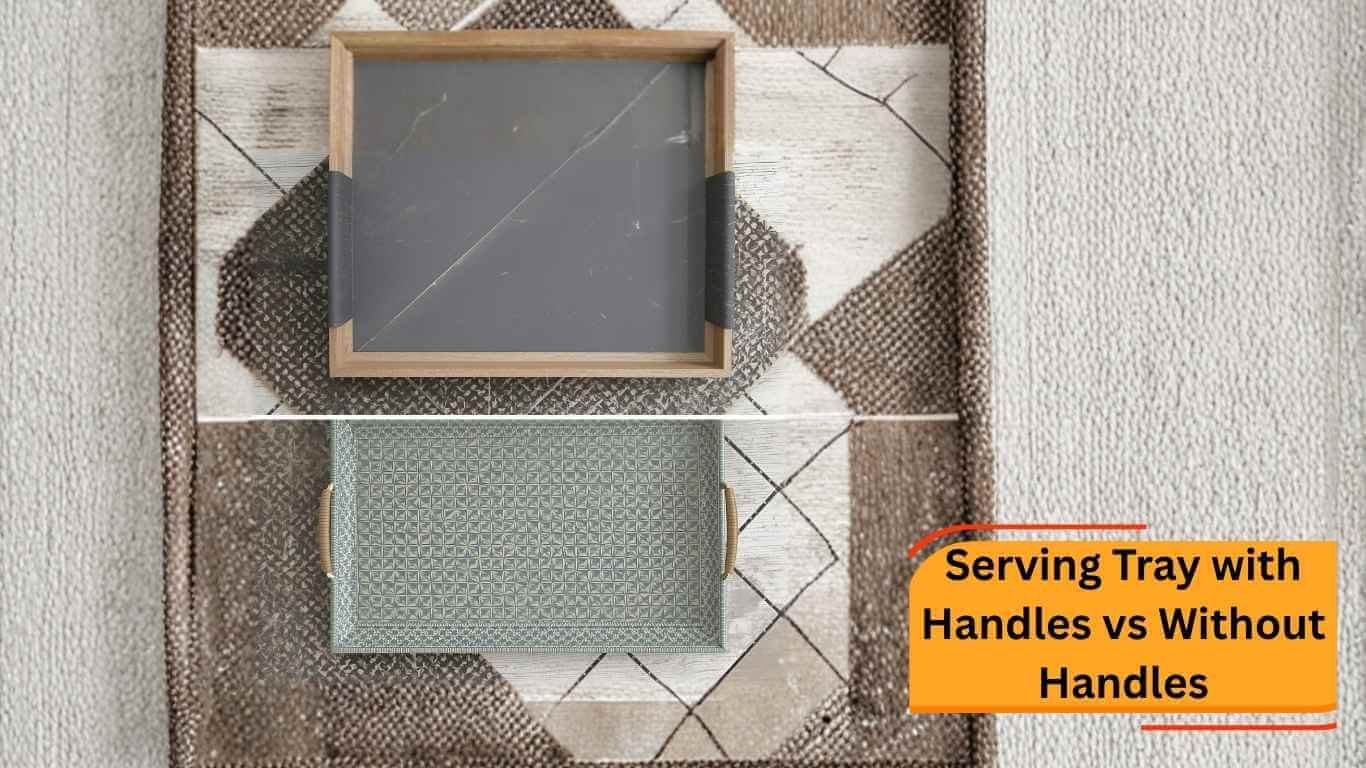Wooden serving trays have become a beloved staple in homes everywhere, gracing everything from casual family dinners to elegant cocktail parties. They add warmth, natural beauty, and a touch of rustic charm to any setting, doubling as both practical serving vessels and stylish decor pieces. However, the very qualities that make wood so appealing—its natural, porous nature—also make proper cleaning and maintenance absolutely critical.
Neglect can lead to a host of problems: bacterial growth, unpleasant odors, unsightly stains, and ultimately, damage that shortens your tray’s lifespan. This comprehensive guide will teach you exactly how to clean wooden serving trays, ensuring they remain beautiful, hygienic, and safe for years to come. We’ll cover daily cleaning routines, effective stain and odor removal, essential oiling and conditioning, safe sanitization techniques, and common mistakes to avoid.
Why Proper Cleaning Matters for Wooden Trays
Understanding the unique characteristics of wood helps explain why a specific cleaning approach is necessary.
Hygiene, Food Safety, and Preservation
Wood is naturally porous, meaning it has tiny openings and channels that can trap food particles, moisture, and, crucially, bacteria. Unlike non-porous surfaces such as ceramic or plastic, wood requires a more nuanced cleaning strategy to prevent it from becoming a breeding ground for germs and odors.
- Bacterial Traps: If not cleaned properly, food residues can penetrate the wood grain, fostering bacterial growth. This is particularly concerning when serving raw meats or other high-risk foods.
- Odor Absorption: Wood readily absorbs smells. Leaving food remnants or spills can lead to persistent, unpleasant odors that permeate the tray and can transfer to future foods.
- Appearance and Longevity: Regular and correct cleaning prevents stains from setting in, maintains the wood’s natural luster, and avoids damage like warping or cracking, which can significantly reduce your tray’s lifespan.
What NOT to Do: Cleaning Mistakes That Ruin Wooden Trays
Knowing what to avoid is just as important as knowing what to do when it comes to wooden tray cleaning. These common mistakes can cause irreversible damage.
Major Don’ts
- Dishwasher Damage: Never, ever put your wooden tray in the dishwasher. The extreme heat, harsh detergents, and prolonged exposure to water will strip natural oils, cause the wood to swell, warp, crack, and potentially split.
- Soaking in Water: Similar to the dishwasher, submerging your wooden tray in a sink full of water will lead to water absorption, causing swelling, warping, and cracking as the wood dries unevenly.
- Harsh Chemicals and Abrasive Scrubbing: Avoid using bleach, ammonia-based cleaners, or any other harsh chemical detergents. These can dry out the wood, discolor it, or leave behind residues that aren’t food-safe. Similarly, steer clear of abrasive scrubbing pads (like steel wool or very rough sponges) which can scratch the wood’s surface and remove its protective finish.
- Trapping Moisture: While it’s good to air dry, don’t let your tray air dry flat on a countertop. This can trap moisture underneath, leading to mold or mildew growth and uneven drying that causes warping. Always allow it to air dry upright or on a drying rack.
Quick Cleaning Routine (After Every Use)
Consistent, gentle cleaning immediately after use is the best way to maintain your wooden tray and prevent stubborn issues. This is the foundation of good wood serving tray care.
Steps for Daily Cleaning
- Remove Debris: Scrape off any food crumbs, sticky residues, or large spills using a soft-bristled brush or a plastic scraper.
- Wipe with Damp Cloth and Mild Soap: Dampen a clean cloth or sponge with warm water. Add a small drop of a mild, scent-free dish soap (the kind you’d use for handwashing dishes). Wipe down both sides of the tray, focusing on any soiled areas. Remember: damp, not dripping wet!
- Rinse and Wipe Away Soap: Rinse your cloth thoroughly with clean water until all soap residue is gone. Then, wipe down the entire tray again to remove any lingering soap film.
- Towel-Dry Thoroughly: Immediately after wiping, use a clean, dry towel (microfiber works great) to dry the tray completely. Pay attention to corners and edges where moisture can hide.
- Air Dry Upright: Finish by standing the tray on its side or placing it on a drying rack to allow air to circulate freely around all surfaces. Ensure it’s completely dry before storing.
Deep Cleaning and Stubborn Stains
For those inevitable spills that leave a mark, a deeper approach is needed. This section focuses on how to remove stains from wooden tray surfaces.
Removing Stains and Odors
- Baking Soda Scrub for Stains: For light stains or general discoloration, create a paste using a small amount of baking soda and water. Apply the paste directly to the stain and let it sit for 10-15 minutes. Gently scrub with a soft brush or sponge, moving with the wood grain. Rinse thoroughly with a damp, clean cloth and towel-dry.
- Vinegar or Lemon Solution for Deodorizing: For persistent odors, particularly after serving strong-smelling foods, lemon and vinegar are natural deodorizers.
- Lemon Method: Cut a lemon in half, sprinkle a generous amount of coarse salt (like kosher salt) onto the tray, and use the lemon half (cut side down) to scrub the salt into the wood. The lemon’s acidity breaks down odors, and the salt acts as a gentle abrasive. Rinse and dry well.
- Vinegar Method: Mix equal parts white vinegar and water in a spray bottle. Spritz the tray lightly, let it sit for 5-10 minutes, then wipe clean with a damp cloth and towel-dry. The vinegar smell will dissipate as it dries.
- Gentle Scrubbing: When dealing with any stain, always scrub gently and always with the wood grain. Aggressive scrubbing or scrubbing against the grain can scratch the wood or damage its finish.
Oiling and Conditioning Your Wooden Tray
Oiling is a vital step in how to oil wooden serving tray surfaces, preventing dryness and maintaining their beauty.
Why and How to Oil
Wood is a natural material that needs moisture to remain supple and prevent cracking. Regular oiling replenishes the wood’s natural oils, preventing it from drying out, cracking, and looking dull. It also helps to create a barrier against moisture and stains.
- Types of Food-Safe Oils: It is crucial to use only food-safe oils, especially if your tray is used for direct food contact.
- Mineral Oil: This is the most popular, readily available, and affordable option. It’s tasteless, odorless, and completely food-safe.
- Beeswax: Often used in combination with mineral oil (as a “board butter”), beeswax provides a durable, water-resistant finish and a lovely sheen.
- Walnut Oil / Grapeseed Oil: These are also food-safe, drying oils that polymerize to create a harder finish. Note: Avoid walnut oil if anyone in your household has nut allergies.
- Avoiding Vegetable Oils: Never use common cooking oils like olive oil, canola oil, or vegetable oil. These oils can go rancid over time, leaving a sticky residue and a foul smell on your tray.
- How to Apply Oil:
- Ensure your tray is clean and completely dry.
- Apply a generous amount of your chosen food-safe oil directly to the wood surface with a clean cloth or paper towel.
- Rub the oil into the wood, moving with the grain, ensuring all surfaces are covered. Don’t forget the sides and bottom!
- Let the oil soak in for at least 30 minutes, or even a few hours, especially if the wood is very dry. The wood should absorb the oil, looking less dry.
- Using a clean, dry cloth, wipe off any excess oil. Buff the surface until it feels smooth and dry to the touch, not greasy.
Sanitizing Wooden Trays Safely
Sometimes, a quick clean isn’t enough, especially after certain uses.
Eco-Friendly and Food-Safe Solutions
- Vinegar-Water Spray: For general sanitization, a solution of equal parts white vinegar and water is highly effective and food-safe. Spray it lightly over the tray, let it sit for a few minutes, then wipe clean with a damp cloth and towel-dry.
- When Sanitizing is Needed:
- After serving raw meats, poultry, or seafood.
- If someone in your home has been ill.
- If you notice any unusual odors or concerns about lingering bacteria.
- Hydrogen Peroxide: A 3% hydrogen peroxide solution can be sprayed on the tray, allowed to fizz for a few minutes, then wiped off with a damp cloth. It’s an effective sanitizer that breaks down into water and oxygen.
- Very Dilute Bleach (Last Resort, Rare Use): While generally advised against for wood, a very dilute bleach solution (1 teaspoon of bleach per quart of water) can be used for extreme sanitization. Apply sparingly, wipe down quickly, and rinse thoroughly and immediately with a clean, damp cloth. Dry instantly. This is a last resort as it can dry out and discolor wood.

Troubleshooting: Common Problems and Solutions
Even with the best care, issues can arise. Here’s how to address them.
Fixing and Preventing Issues
- Treating Water Damage, Warping, and Cracks:
- Water Rings: Often, a baking soda paste (as described above) or rubbing mayonnaise on the ring and letting it sit overnight can help lift water stains.
- Mild Warping: If the warp is minor, try placing the convex side (the side that bows outwards) face down on a damp towel overnight, or misting it lightly with water and placing weights on top. This aims to reintroduce moisture evenly. Severe warping is often irreversible.
- Small Cracks: Fill with wood glue, clamp if possible, and sand smooth once dry. Regular oiling is the best preventative measure.
- Removing Persistent Smells: Beyond lemon/salt or vinegar, sprinkle coarse salt liberally over the tray, let it sit for several hours or overnight, then brush off. The salt absorbs odors.
- What to Do If Finish Wears Off or Tray Feels Rough: If your tray feels dry, rough, or its finish has dulled, it’s time for a thorough sanding (starting with 150-grit, then 220-grit) and re-oiling/re-finishing. This rejuvenates the wood.
Frequently Asked Questions
How often should I oil my wooden tray?
A good rule of thumb is to oil your wooden tray once a month, or whenever it starts to look dry and dull. If you use it very frequently or wash it often, you may need to oil it every two weeks.
What’s the safest oil or polish to use?
100% food-grade mineral oil is widely considered the safest and most effective for wooden trays that come into contact with food. Beeswax (often mixed with mineral oil) is also excellent. Avoid vegetable oils.
Can I use wooden trays for raw/cooked meat?
Yes, you can, but extreme care is needed. Immediately after use, clean and sanitize the tray thoroughly with a vinegar solution or 3% hydrogen peroxide to prevent cross-contamination. Consider designating a specific tray for raw meats.
How do I remove black stains or mold?
For black stains, which can indicate mold or mildew, scrub with a mixture of baking soda and vinegar paste. If persistent, a very light sanding might be needed. Ensure the tray is thoroughly dried afterward to prevent recurrence.
What do I do if my tray feels sticky or smells bad?
A sticky feel often means old oil has gone rancid or too much oil was applied and not properly buffed off. Scrub with lemon and salt, then wash with mild soap and water, dry thoroughly, and re-oil with fresh mineral oil. Bad smells can be addressed with lemon/salt or vinegar solutions.
Summary Care & Maintenance Tips
Maintaining your wooden serving trays doesn’t have to be a chore; it’s a simple routine that ensures their beauty and longevity.
- Do’s:
- Wipe immediately after each use with a damp cloth and mild soap.
- Always towel-dry thoroughly.
- Air dry upright.
- Oil regularly with food-safe mineral oil or beeswax.
- Address stains and odors promptly.
- Don’ts:
- Never put in the dishwasher.
- Never soak in water.
- Avoid harsh chemicals or abrasive scrubbers.
- Don’t use vegetable oils.
By following these essential guidelines for daily cleaning for wood trays and proper oiling with the best oil for wood serving tray, your cherished wooden serving trays will remain beautiful, hygienic, and ready to serve for countless gatherings to come.



